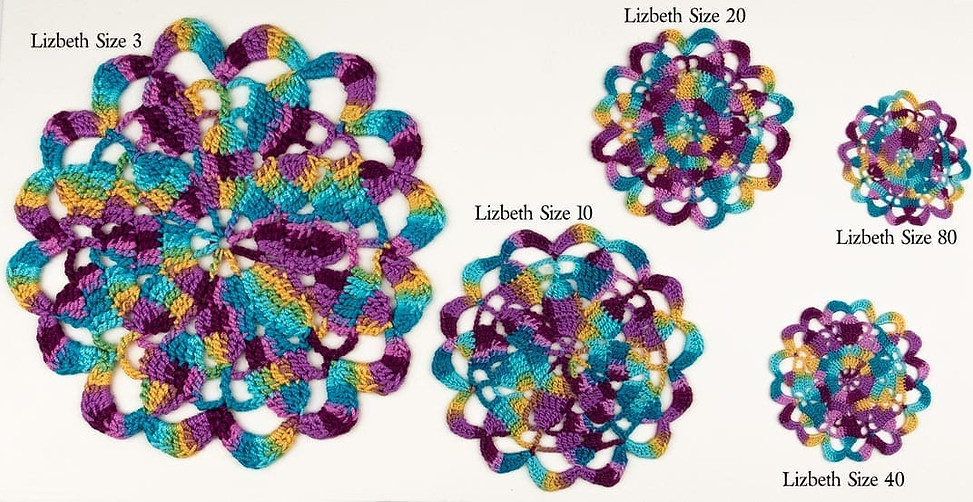What is an antique doily?
"Antique" can be hard to define, I have made decisions in order to be consistent and make everything clear. I define antique as 50 years ago and beyond; that way I can easily source patterns in the public domain.
Also, your first question may be why I do not automatically make all pieces in the original specified materials. This is especially true for 19th century patterns, which were more often in fine thread. First, I will say that these patterns, not intended to be worn, did leave room for maker's choice. Today we constantly incorporate our own decisions when we make items ourselves; makers in past weren't scared to either. Also, materials nowadays are just different. If a pattern asks for "Raworth's cotton thread #24," I cannot possibly acquire that. No matter how close I try to be, I will still be a little off.
More importantly, I separated "modern" and "original" because I see great benefit to modern remakes:
-
It's faster and cheaper. Using finer threads adds considerable time to the project. You cannot go fast because everything is on such a small scale.
-
It's larger and easier to see and enjoy. It's hard to appreciate a doily made with #80 thread because the stitches are too small to enjoy. This is a topic I am very passionate about. Making something small doesn't make you macho. Sometimes the best choices for that piece require larger thread. I would rather make something beautiful that is visible than something that is needlessly small just to say I can. I am giving you art from history, and I want you to be able to see it.
-
Larger thread weights were available at that time. It is not an error to use them. If the pattern maker says #40 thread, but I use #10, I'm not ruining the piece or being inaccurate. I'm making a decision. I have the freedom to do so, just as people did at the time the pattern was written. Patterns are like written music. We have Mozart's written music, but there is so much interpretation possible. Every musician makes many decisions, and also the modern instruments sound different because they are made differently. When you hear Mozart's music today, it does not sound like Mozart heard it. Does that mean modern performances of Mozart's music are wrong? No, it's just based on the original, and is not a perfect copy. When you consider what I am doing, remember it is like I am making music from written notes. That process is an art not a computer program. However, if you want me to execute the pattern exactly as written (to the best of my ability), I leave that as an option.
-
Modern blocking techniques preserve the piece much better. The old fashioned use of heavy starching leads to faster discoloration. Modern day use of filtered water harms the piece much less than the old practice of just using tap water for blocking.
-
The weight of thread is a question of size. The pattern is not impacted at all. The result is just scaled up or down. Cotton thread comes #3 - 80 weight for our purposes. I traditionally use #10, which means the piece is larger than one made with #80
What is a "Modern Remake?"
Making
-
10# mercerized cotton thread,
Aunt Lydia -
2mm Tulip Hook
Blocking
-
Twice filtered water
-
Pin blocking on a mat
-
Misted water blocked (not soaked)
-
Lightly starched
What is "Original Type Material and Blocking Methods?"
Making
-
#10-80 mercerized cotton thread, Lizbeth
-
0.5 - 1.5mm hook
Blocking
-
Tap water
-
Blocking on an ironing board with an iron or with pins (depends on the time)
-
Heavily starched
Image above from this fantastic webpage on the size differences, see here.

